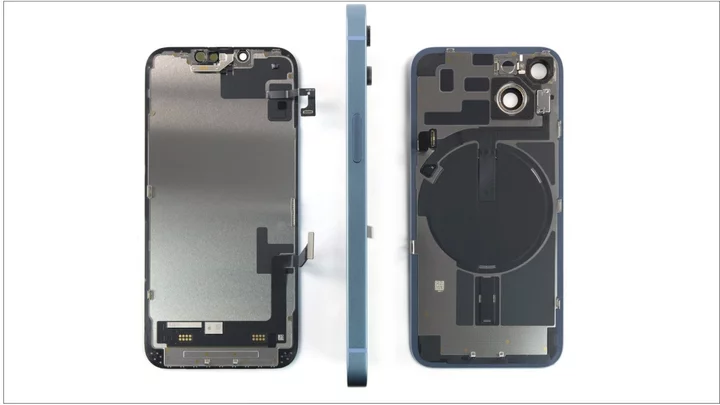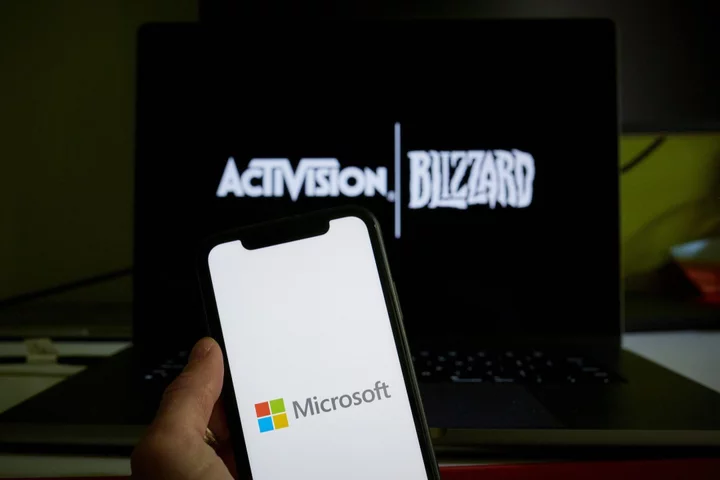For a few generations now, iPhones have been difficult to repair. Mainly because of the back glass, which required crazy laser machines if you managed to shatter it. So when the iPhone 14 non-Pro models debuted with a redesign that made back glass repair much more accessible, iFixit was elated and gave it a 7 out of 10 repair score. But now, iFixit is retroactively changing that score to a 4 (do not recommend), for good reason.
The iPhone 14 is the only device iFixit plans to rescore for now, but the change is partly due to an overhaul of iFixit's repair scoring system.
The company revealed new criteria in a blog post today while separately explaining the decision to lower the iPhone's score. That new criteria clarifies why iFixit changed its mind and explains that Apple could regain the higher score with some software changes. And if you're wondering how software could possibly affect a repairability score, that's where software calibration and parts paring comes in. The first can often be a necessary process of repairs, while the second may occasionally be justified, but the real devil in the details is accessibility.
Software calibration is common in repairs, especially when a moving part is involved. For instance, when you replace the joystick in a controller, you may use software calibration to ensure the joystick is detected and centered correctly. You can accomplish that with the Nintendo Switch right in the console's OS, which makes for an easier repair process. If you can't calibrate your new part, it won't work correctly, and your repair won't be successful.
Parts pairing, on the other hand, is a little more complicated. Imagine this scenario: you have an iPhone 13 Pro with a cracked screen and another identical iPhone 13 Pro with a good screen but a bad battery. You take the perfectly good display off the latter and swap it with the broken screen. Everything should work, right? You've used genuine Apple parts to fix the problem. For a while, following that process broke Face ID. Even though Face ID isn't even part of the display.
Apple later called that issue a bug and released an update to fix it, but it's not the first time this has happened. Swapping out Touch ID sensors has disabled the biometric sensor. Changing displays has turned off True Tone. And Apple isn't alone. You can't replace an Xbox One or PS4 hard drive without also replacing the motherboard, even if you take the part from another console.
Sometimes, companies have fixed these issues, claiming these instances were bugs. Sometimes, parts pairing really is a security problem, such as with biometric sensors that help you access credit card and fingerprint info (like Touch ID). But other times, there's no good reason for it. Unless you have your device repaired by the manufacturer who can use in-house software to "pair" the new part with your device, repairing your gadget is impossible. Your iPhone may complain you aren't using genuine parts, even when you are.
That's just one of the reasons why iFixit dropped the score on the iPhone 14, despite its easier-to-repair back glass. Today, if you swap an iPhone 14's display or battery with a component from another iPhone 14, your phone won't work right. Not unless you had access to Apple's System Configuration tool to "pair" the parts through a software handshake with the company's servers. You can buy parts directly from Apple that are pre-approved and avoid the issue. But that forces you to buy new parts when genuine parts already exist and might otherwise go into landfills.
Parts pairing isn't the only thing that iFixit now considers with its new scoring process. How easy it is to get to critical components, like the display or battery, the number of tools needed, how often you need to swap tools, or the use of obscure bits, all play a part. You should give the full blog a read; it's fascinating.
In the meantime, we can only wait to see if the iPhone 15 Pro lands a higher repair score than last year's iPhone 14. It also has the new easy-to-access back glass, but if it has the same part-pairing process, it doesn't bode well for Apple.









